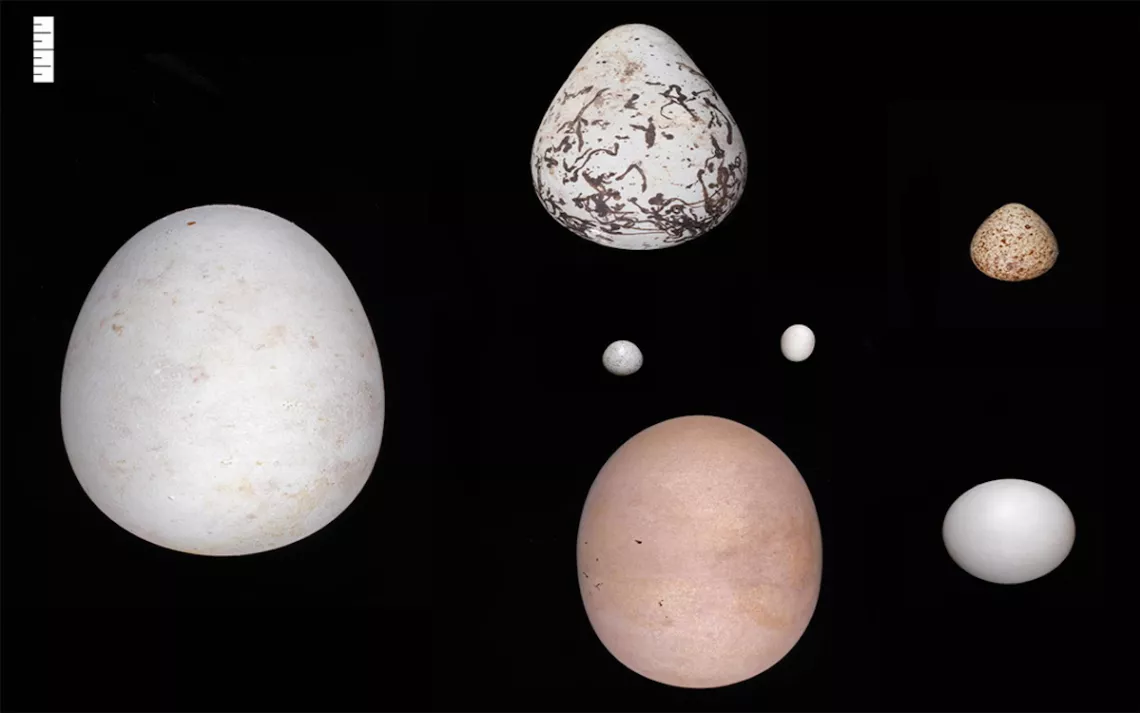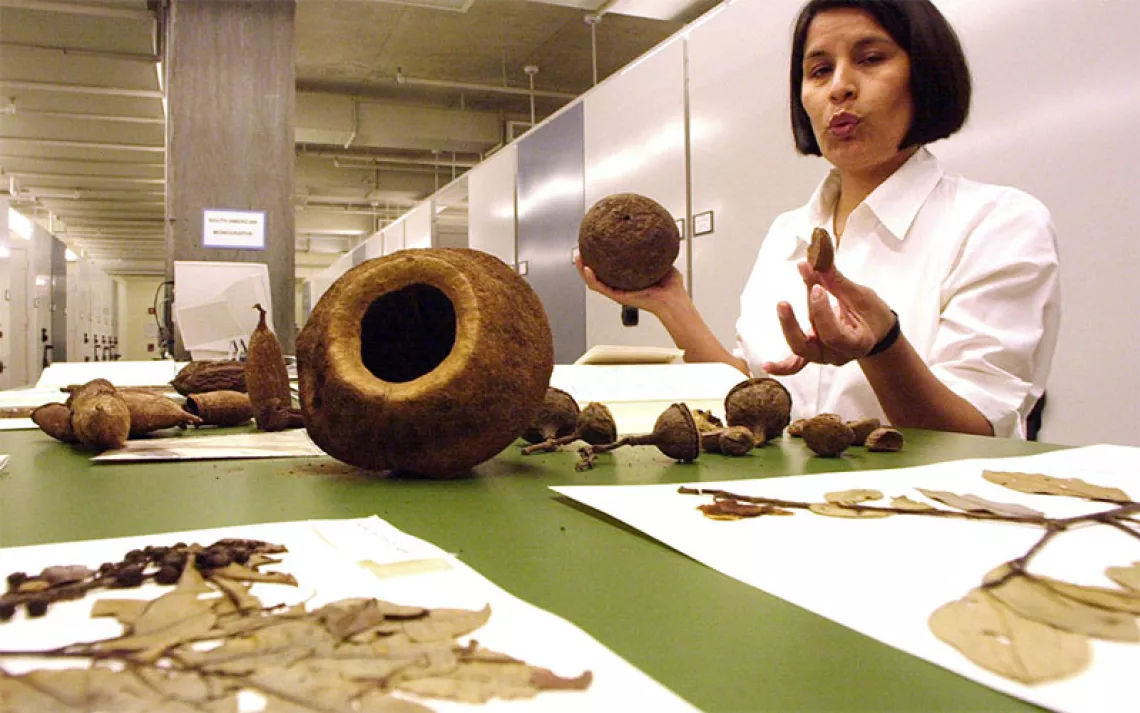Why Do Bird Eggs Come in Different Shapes?
A new study offers an explanation for the diversity of bird-egg shapes

Photo courtesty of the Harvard Museum of Comparative Zoology
There are roughly 10,000 species of birds on Earth, and just about as many unique egg shapes and colors. Hummingbirds make tiny eggs that look like Tic Tacs; owls produce eggs that are almost as spherical as golf balls. Other species produce every shape in between. For decades, researchers have come up with different hypotheses for why bird eggs have so many different shapes, but with no definitive answers. Now, a new study in the journal Science has looked at all the data, and it looks like they’ve cracked the case: The shape of a bird’s egg is linked to how well it can fly.
Over the years, researchers have produced lots of good ideas for why bird eggs vary so much. Some said the shape was related to the availability of calcium in a species’ diet. Others have hypothesized that pointy eggs maximized the number that could be squeezed into a nest. It was thought that the very pointy eggs of some cliff-nesting birds would cause them to spin instead of rolling off the rocks.
Ornithologist and evolutionary biologist Mary C. Stoddard at Princeton, who has studied egg color patterns, wondered about the diversity of egg shapes as well. When she looked into it, though, she found no one had really drilled into the data to figure out the mystery. So she gathered a team to get it done. “To do this, you need a large data set of eggs as well as data on diet, clutch size, nest rotation, and nest type,” she says. “Our guess is it’s been difficult for the community to assemble these data. But we were able to take advantage of the hard work others have done.”
Stoddard and her collaborators started by photographing 50,000 eggs from 1,400 different bird species housed at the university. They then ran the images through a computer program called Eggxtractor, which automatically measures the length, width, and shape of the eggs. Then, they calculated how far from perfectly spherical each egg was.
Using that data as well as the wealth of information on morphology, genetics, and life history collected over the decades, they began looking for correlations to see if the eggs supported any of the hypotheses out there. It turned out that things like clutch size and nest location had no impact on egg shape.
But one obscure hypothesis did seem to match up: wing length. Typically, the ratio of a bird’s wing length to its width, or hand-wing index, gives a good approximation of whether a bird is a good, aerodynamic flyer, like an acrobatic swift, or a relatively poor or infrequent flyer, like a trogon or owl. It turned out that the better a bird is at flying, the more elongated and asymmetrical its eggs. “When we tested these hypotheses, we had no idea what we’d find,” says Stoddard. “That egg shape correlates with flight ability wasn’t expected, but it’s not something we had to scratch our head over for long. In a way, it made so much sense that adaptation for flight had a knock-on effect on egg shape.”
That’s because good flyers need compact and lightweight bodies, which also reduces the space available in their abdominal cavity. Egg shape is not determined by the shell. That doesn’t form until the end of the process. Instead, the egg first forms with a tough membrane around it that is shaped by the pressure within the bird’s oviduct. To maintain the volume needed to produce a healthy chick, these birds evolved more elongated or pointier eggs that could fit in their narrower bodies.
While the ornithological community has been enthusiastic about the work, Stoddard says the surprising result raises more questions than answers. For instance, charadriiformes, an order of shorebirds, are typically excellent flyers, but their egg shapes are all over the map. In follow-up studies Stoddard hopes to look at the membrane properties in birds to see if her team’s model for egg-shape formation are correct. She also wants to make measurements of bird pelvises from museum samples to see how that relates to egg shape. And, she wants to look more closely at the transition between therapod dinosaurs and birds, since asymmetrical eggs are exclusive to those groups and evolved well before the advent of modern birds.
The more we learn about eggs, Stoddard says, the more we learn about evolution in general. “It reminds me that the egg evolved very early in our vertebrate history and is really connected to us,” she says. “Our ancestors would have never been able to move out of the water onto land without eggs. It’s not just birds; breakthroughs in this field are about our own evolutionary history and story, and it’s exciting to see how it all connects.”
 The Magazine of The Sierra Club
The Magazine of The Sierra Club



